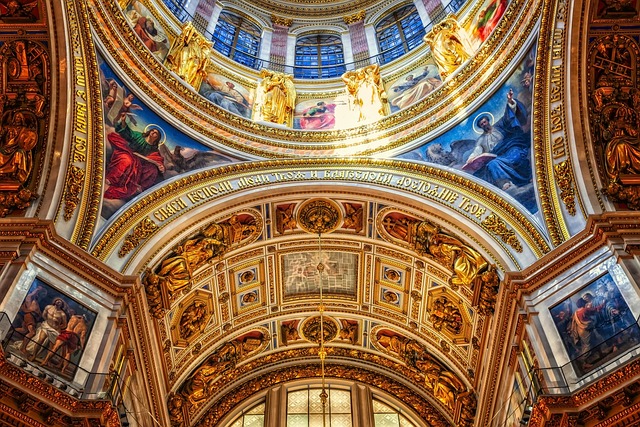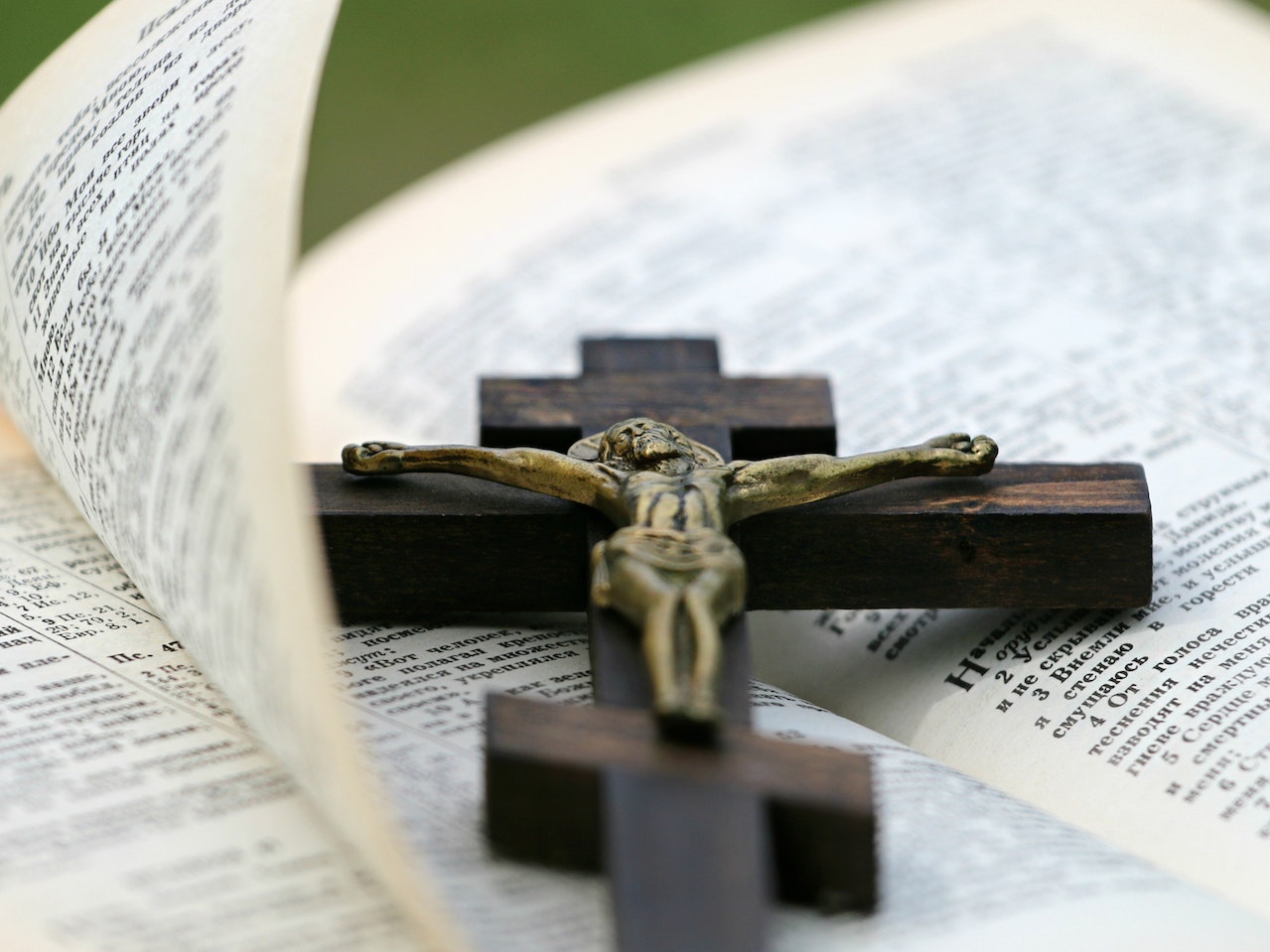Orthodox Christianity and Catholicism are two major branches of Christianity that share many similarities but also have significant differences. While both traditions trace their roots back to the early Christian Church, they have developed distinct theological, liturgical, and organizational structures over the centuries. This article aims to explore the similarities and differences between Orthodox and Catholic Christianity, shedding light on their shared beliefs and practices as well as the factors that set them apart.
Table of Contents
History and Origins of Orthodox and Catholic Christianity
Are Orthodox and Catholic the same? This is a question that often comes up when discussing Christianity. While both Orthodox and Catholic Christianity share many similarities, they also have distinct differences that set them apart. To understand these differences, it is important to delve into the history and origins of these two branches of Christianity.
Both Orthodox and Catholic Christianity trace their roots back to the early days of Christianity. In fact, they both claim to be the original and true form of Christianity. The Orthodox Church believes that it has preserved the teachings and traditions of the early Christian Church, while the Catholic Church sees itself as the continuation of the apostolic tradition established by Jesus Christ.
The split between Orthodox and Catholic Christianity can be traced back to the Great Schism of 1054. This event marked the formal separation between the Eastern Orthodox Church and the Roman Catholic Church. The primary cause of the schism was a disagreement over the authority of the Pope. The Eastern Orthodox Church rejected the Pope’s claim to universal jurisdiction and instead emphasized the authority of individual bishops and the collective decision-making of church councils.
Another significant difference between Orthodox and Catholic Christianity is the use of icons. Icons are religious images or paintings that are venerated and used as aids to worship. The Orthodox Church has a long-standing tradition of using icons in its worship, believing that they serve as windows to the divine. On the other hand, the Catholic Church has had a more complex relationship with icons throughout its history. While icons have been used in Catholic worship, there have also been periods of iconoclasm, where the use of icons was discouraged or even banned.
The liturgical practices of Orthodox and Catholic Christianity also differ in some ways. Both churches have rich and elaborate liturgical traditions, but there are variations in the specific rituals and prayers used. For example, the Orthodox Church places a strong emphasis on the use of chant and has a distinct musical tradition known as Byzantine chant. In contrast, the Catholic Church has a more diverse range of musical styles and traditions, including Gregorian chant and polyphony.
Despite these differences, it is important to note that Orthodox and Catholic Christianity also share many common beliefs and practices. Both churches believe in the Holy Trinity, the divinity of Jesus Christ, and the importance of sacraments such as baptism and the Eucharist. They also share a commitment to the moral teachings of Christianity, including the Ten Commandments and the teachings of Jesus Christ.
In conclusion, while Orthodox and Catholic Christianity have distinct differences, they also share a common history and many common beliefs. The split between these two branches of Christianity occurred over a thousand years ago, and since then, they have developed their own unique traditions and practices. Understanding the history and origins of Orthodox and Catholic Christianity can help us appreciate the richness and diversity of the Christian faith. So, are Orthodox and Catholic the same? The answer is both yes and no – they are different, yet connected, branches of the same tree.
Key Differences in Doctrine and Beliefs between Orthodox and Catholic Churches

Are Orthodox and Catholic the same? This is a question that often comes up when discussing different Christian denominations. While both Orthodox and Catholic churches are part of the larger Christian faith, there are key differences in doctrine and beliefs that set them apart. In this article, we will explore some of these differences and shed light on the unique aspects of each tradition.
One of the main differences between Orthodox and Catholic churches lies in their understanding of the papacy. Catholics believe in the primacy of the Pope, who is considered the successor of Saint Peter and the head of the Church. The Pope has the authority to make infallible statements on matters of faith and morals. On the other hand, Orthodox Christians do not recognize the Pope as the supreme authority. Instead, they believe in a conciliar model of governance, where decisions are made collectively by bishops in council.
Another significant difference is the use of icons in worship. Orthodox Christians have a rich tradition of using icons, which are religious images or paintings, as aids in prayer and worship. Icons are seen as windows to the divine and are venerated as a means of connecting with the spiritual realm. In contrast, Catholics also use religious images, but they do not hold the same level of veneration as in the Orthodox tradition. Catholicism places more emphasis on the use of statues and crucifixes as visual reminders of Christ’s sacrifice.
The understanding of original sin is another area where Orthodox and Catholic beliefs diverge. Catholics believe in the concept of original sin, which is inherited from Adam and Eve’s disobedience in the Garden of Eden. This sin is seen as a stain on human nature that can only be cleansed through baptism. Orthodox Christians, on the other hand, do not hold the same understanding of original sin. They believe that while humanity is affected by the consequences of Adam and Eve’s sin, each person is responsible for their own sins and can be cleansed through repentance and the sacraments.
The sacraments themselves also differ in some aspects between Orthodox and Catholic churches. Both traditions recognize seven sacraments, including baptism, Eucharist, and marriage. However, there are variations in the way these sacraments are celebrated. For example, in the Orthodox tradition, infants are baptized through immersion in water, while Catholics often practice infant baptism through pouring or sprinkling water. Additionally, the Eucharist, or Holy Communion, is seen as the true body and blood of Christ in both traditions, but the way it is administered and understood may vary.
Despite these differences, it is important to note that Orthodox and Catholic churches share a common foundation in the teachings of Jesus Christ. Both traditions uphold the belief in the Holy Trinity, the divinity of Christ, and the importance of living a life of faith and love. While there may be theological distinctions, it is crucial to approach these differences with respect and understanding.
In conclusion, Orthodox and Catholic churches are not the same. They have distinct differences in their understanding of the papacy, the use of icons, the concept of original sin, and the celebration of sacraments. However, it is essential to recognize that these differences do not diminish the shared faith and commitment to Christ that both traditions hold. By embracing these differences and engaging in dialogue, we can foster a deeper appreciation for the richness and diversity within the Christian faith.
Similarities in Liturgical Practices and Sacraments of Orthodox and Catholic Churches
Are Orthodox and Catholic the same? This is a question that often comes up when discussing different Christian denominations. While there are certainly differences between the two, there are also many similarities, particularly when it comes to liturgical practices and sacraments.
One of the most striking similarities between Orthodox and Catholic churches is their emphasis on liturgy. Both traditions place a great deal of importance on the celebration of the Eucharist, or Holy Communion. In both the Orthodox and Catholic churches, the Eucharist is seen as the central act of worship and is celebrated with great reverence and solemnity.
Another similarity is the use of icons in worship. Both Orthodox and Catholic churches have a long tradition of using icons, which are religious images or paintings, as aids to prayer and meditation. Icons are often placed in prominent locations within the church and are venerated by the faithful. This practice is rooted in the belief that the image of Christ or a saint can serve as a window into the divine and help to deepen one’s spiritual connection.
In addition to liturgical practices, the Orthodox and Catholic churches also share a common understanding of the sacraments. Both traditions recognize seven sacraments, including baptism, confirmation, and the Eucharist. These sacraments are seen as outward signs of God’s grace and are believed to convey spiritual blessings to the recipient.
Furthermore, both Orthodox and Catholic churches have a hierarchical structure with bishops as the highest authority. In both traditions, bishops are seen as successors to the apostles and are responsible for overseeing the spiritual life of their respective communities. This hierarchical structure ensures unity and continuity within the church and helps to maintain the integrity of its teachings and practices.
Despite these similarities, it is important to note that there are also significant differences between Orthodox and Catholic churches. One of the most notable differences is the issue of papal authority. While Catholics recognize the Pope as the head of the Church and the successor of Saint Peter, Orthodox Christians do not accept the Pope’s authority and instead have their own system of patriarchs and bishops.
Another difference is the use of the Filioque clause in the Nicene Creed. This clause, which was added by the Western Church, states that the Holy Spirit proceeds from both the Father and the Son. Orthodox Christians, however, believe that the Holy Spirit proceeds from the Father alone and do not include the Filioque clause in their version of the Creed.
Despite these differences, it is important to remember that Orthodox and Catholic Christians share a common faith in Jesus Christ and a commitment to living out their beliefs in their daily lives. Both traditions have a rich spiritual heritage and offer unique insights into the Christian faith.
In conclusion, while there are certainly differences between Orthodox and Catholic churches, there are also many similarities, particularly when it comes to liturgical practices and sacraments. Both traditions place a great deal of importance on the celebration of the Eucharist, use icons in worship, and recognize the same seven sacraments. While there are differences in terms of papal authority and the inclusion of the Filioque clause, it is important to focus on the shared beliefs and values that unite Orthodox and Catholic Christians.
Ecumenical Efforts and Dialogue between Orthodox and Catholic Christians
Are Orthodox and Catholic the same? This is a question that has been asked by many people over the years. While both Orthodox and Catholic Christians share many similarities, there are also some key differences between the two. However, in recent years, there have been significant efforts made towards ecumenical dialogue and understanding between Orthodox and Catholic Christians.
One of the main reasons for the differences between Orthodox and Catholic Christians is the historical and theological context in which each tradition developed. The Orthodox Church traces its roots back to the early Christian communities in the Eastern part of the Roman Empire, while the Catholic Church emerged as the dominant Christian tradition in the Western part of the Empire. These different historical contexts led to the development of distinct liturgical practices, theological emphases, and ecclesiastical structures.
Despite these differences, there have been ongoing efforts to foster dialogue and unity between Orthodox and Catholic Christians. The Second Vatican Council, held by the Catholic Church in the 1960s, called for increased dialogue with other Christian traditions, including the Orthodox Church. This marked a significant shift in the Catholic Church’s approach towards ecumenism and paved the way for greater cooperation and understanding between the two traditions.
Since then, there have been numerous theological dialogues and joint statements between Orthodox and Catholic theologians. These dialogues have focused on areas of agreement and disagreement, seeking to find common ground and overcome historical divisions. One of the key areas of discussion has been the role of the Bishop of Rome, also known as the Pope, in the universal Church. This has been a longstanding point of contention between Orthodox and Catholic Christians, with the Orthodox Church rejecting the primacy of the Pope as the head of the Church.
However, despite these differences, there have been significant strides made towards greater unity. In 2016, Pope Francis and Patriarch Kirill of Moscow and All Russia met in Cuba, marking the first meeting between a Pope and a Russian Orthodox Patriarch in nearly a thousand years. This historic meeting was seen as a significant step towards healing the divisions between the two traditions and fostering greater unity.
In addition to these high-level meetings, there have also been grassroots efforts to promote dialogue and understanding between Orthodox and Catholic Christians. Interfaith conferences, joint prayer services, and educational initiatives have all played a role in fostering greater unity and cooperation between the two traditions. These efforts have helped to break down stereotypes and misconceptions, allowing Orthodox and Catholic Christians to see each other as brothers and sisters in Christ.
While there is still much work to be done, the ecumenical efforts and dialogue between Orthodox and Catholic Christians have brought about significant progress in recent years. The shared commitment to the Gospel and the desire for unity have helped to bridge the historical and theological divides that have separated the two traditions for centuries. As Orthodox and Catholic Christians continue to engage in dialogue and work towards greater understanding, the hope for full communion and unity becomes ever more attainable.
In conclusion, while Orthodox and Catholic Christians have some differences in their historical development and theological emphases, there have been significant efforts made towards ecumenical dialogue and understanding. The Second Vatican Council and subsequent theological dialogues have paved the way for greater cooperation and unity between the two traditions. High-level meetings between Pope Francis and Orthodox leaders, as well as grassroots initiatives, have helped to foster greater understanding and break down barriers. As Orthodox and Catholic Christians continue to engage in dialogue and work towards greater unity, the hope for a fully united Church becomes more tangible.
Conclusion
In conclusion, Orthodox and Catholic Christianity share many similarities in terms of their core beliefs and practices, such as the belief in the Holy Trinity and the sacraments. However, there are also significant differences between the two, particularly in terms of church structure, liturgical practices, and theological interpretations. While both traditions have a rich history and continue to play important roles in the Christian faith, they are distinct branches of Christianity with their own unique characteristics.
For licensing reasons, we must provide the following notice: This content was created in part with the help of an AI.


